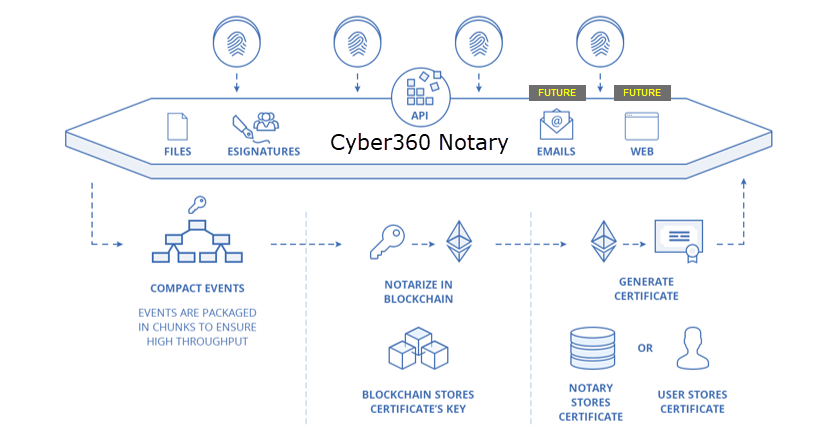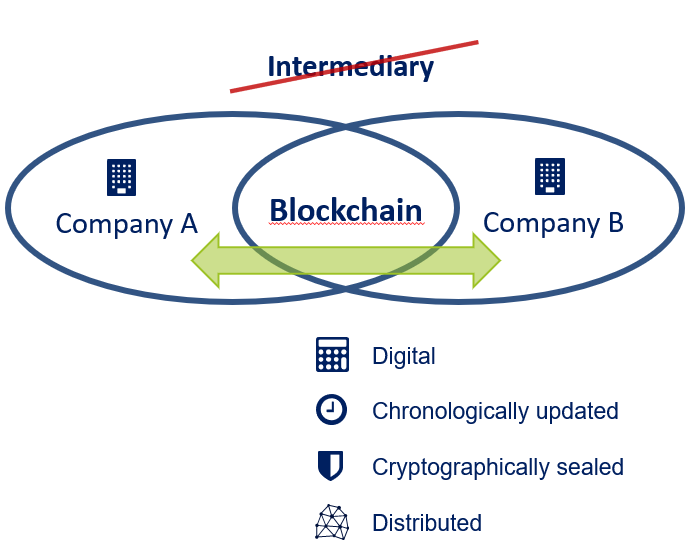Powered on the Acronis Cloud
Teksight360 Cyber Notary Cloud
Cyber Notary Cloud is a blockchain-based service for file notarization, eSigning and verification for organizations of any size. It creates a digital fingerprint for files and stores it in a public blockchain ledger, which enables independent validation of its authenticity and proof the file existed at a specified date and time.
This means organizations in any industry, including healthcare, law, manufacturing, and finance can benefit from using blockchain technology to verify the integrity of their business-critical data, while
achieving regulatory transparency and decreasing security risks.
CYBER360 NOTARY CLOUD INSIGHTS
- Ethereum blockchain: Acronis Cyber360 Notary Cloud uses the Ethereum blockchain, whose distributed architecture ensures verification is always available, with no possibility of fraud or interference.
- Easy-to-use web interface: Equipped with a ready-to-use, convenient, web interface, Cyber360 Notary Cloud provides quick onboarding and a high level of usability for end-users.
- Any type of data: With Cyber360 Notary Cloud, you can notarize or eSign files of any format and type, including documents, images, videos, and music.
- Trusted, independent verification: Once a file is notarized using the Cyber360 Notary Cloud, anyone can verify its authenticity, either through the userinterface or manually via the blockchain. In either case, users can verify the data from any device at any time.
What is Blockchain?
A blockchain is a continuously growing list of records, called blocks, which are linked and secured using cryptography. Each block contains a cryptographic hash of the previous block, a timestamp and transaction data.
- SECURE: Blockchain uses strong cryptography to create transactions that are impervious to fraud and establishes a shared truth. Also, all the transactions are signed with the digital certificate.
- SHARED: The real benefits of blockchain, over conventional technology, are achieved when we use it to link organizations to share information on a distributed ledger.
- DISTRIBUTED: A blockchain can be distributed across multiple organizations and becomes more secure as replicas are added.
- LEDGER: Every transaction is written into the ledger once and cannot be changed after the fact.
Conclusive Verification without a Trusted Party
- Third party eliminated
- Falsifying or destroying entries to conceal malicious activity is practically impossible
- Rapidly Verifiable results
- Complete, automated audit > Reduces the cost ad time necessary to conduct an audit
Every transaction becomes “notarized”, similar to the transaction being verified by a notary – only in an electronic way
Before Blockchain Trusted 3rd Parties Guaranteed Immutability of Records
Ancient Rome:
- Notarius took dictation of Roman court and Senate proceedings
- Scribae acted as court recorders
- Tabellio facilitated private contracts and archived documents
Byzantine and Renaissance Italy:
- Notaries created contracts by witnessing signing, dating and reciting in court
- Church priests took over some of the functions
Notaries underpin the modern economy by providing trust in:
- Contracts
- Land titles
- Wills
- Power of attorney
- etc.
In the digital era, companies act as sources of trust via:
- Electronic signatures
- Web of trust
- Trusted timestamping
- Trusted computing
- Remote notaries
- Web evidence
Blockchain provides a distributed source of trust with:
- Smart contracts, trusted timestamping, e-signatures, etc.
- No need for third-party verification from either private or government agencies
How it Works

Any Industry. Any Document. Any File.
Organizations in any industry can benefit from using blockchain technology, including healthcare, law, manufacturing, and finance. Cyber 360 Notary Cloud enables businesses to gain all the advantages of this innovative technology, by allowing them to:
- Verify That a File is Unchanged (or Changed): Contracts, Media files, Surveillance camera footage,
Medical records, Rental or Lease agreements, Loan agreements, etc. - Confirm a Creative Work Originated on a Certain Date: Videos, Photos, Audio files, etc.
- Substantiate a Legal Document Existed When You Claim it Did: Nondisclosure agreements, Independent contractor agreements, Confidentiality agreements, Property registry records, etc.
- Show That Bills Were Paid When You Said They Were Paid: Financial documents, Insurance documents, etc.
- Prove a Document was Signed by Certain Parties and on a Specific Date: Digital contracts, Purchase orders, Internal policies, Petitions or any other file.

